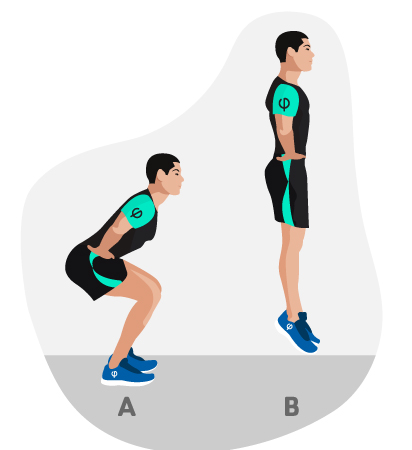
Squat jump (SJ)
The main objective of the Squat Jump (SJ) test is to measure the explosive strength of the lower limbs. The SJ test is part of the Bosco vertical jump test battery to assess the functional, neuromuscular and morphophysiological characteristics of the extensor muscles of the lower limbs. The type of muscular action developed in this test is called concentric contraction.
- Required Material: Different measuring instruments can be used, such as: force platforms, contact platforms, optical position transducers (infrared), accelerometers, video analysis or even specific software and apps.
- Procedure: The subject should stand on the measuring instrument with hands on hips and knees bent at a 90° angle (half squat position). He/she must hold this position for 5 seconds to eliminate most of the elastic energy accumulated during bending. Once the starting position has been adopted, the subject will try to jump as high as possible, avoiding any countermovement action and without releasing his/her hands, to land in the same position with feet and legs extended as shown in the image, landing on the metatarsal area first and then on the back of the foot.
- Assessment: The height of the jump must be measured in centimetres (cm) and the subject has a maximum of 3 attempts. (En Fisicalcoach,) The highest height reached by the subject can be recorded, as well as the mean and the median. In addition to jump height, different variables of interest depending on the measuring instrument can be recorded.
- Remarks: This test assesses explosive strength without reusing elastic energy and without exploiting the myotatic reflex, giving more reliable results than the countermovement jump (CMJ). This occurs due to an isolation of mechanical capabilities since there is no stretch-shortening cycle as in the CMJ.
Take this test and 139 more in our App